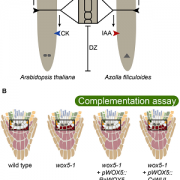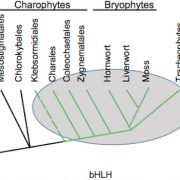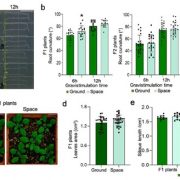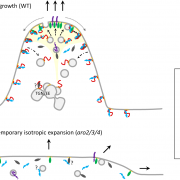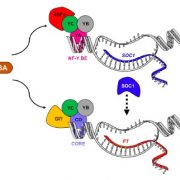Perspective. The art of drying gracefully: The future for desiccation research
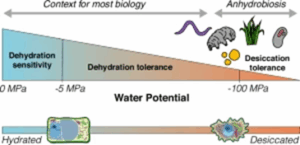 In their perspective article, “Life on the dry side: a roadmap to understanding desiccation tolerance and accelerating translational applications,” Marks et al. outline the current state and future promise of desiccation tolerance research. They define desiccation tolerance as “the ability to dry to a quiescent state and resume normal cellular function when rehydrated,” a process fundamentally distinct from drought resistance or avoidance. Tracing its evolutionary origins to ancestral prokaryotic, archaeal, and algal lineages, desiccation tolerance has emerged multiple times across diverse taxa, often accompanied by convergent molecular adaptations, such as the repeated evolution of Early Light Inducible Proteins (ELIPs) in vascular plants. The ecological breadth of desiccation tolerant organisms is similarly diverse, with species inhabiting both arid and intermittently wet environments, frequently exhibiting tolerance to other extreme conditions. Physiologically, desiccation tolerance is characterized by intricate cellular responses, including vitrification of the cytosol, reactive oxygen species (ROS) accumulation, and structural modifications like leaf curling. However, progress in the field is hindered by inconsistent experimental frameworks. The authors advocate for standardized protocols that include precise hydration status measurements, viability assays post-rehydration, and time-course studies using indicators such as chlorophyll fluorescence. Microscopy, if properly executed to prevent sample rehydration, also offers key insights. Emphasizing the importance of FAIR (Findable, Accessible, Interoperable, and Reusable) data principles, the authors argue that collaborative and unified research practices will be crucial to unlocking DT’s potential in medicine, agriculture, and industry, especially for supporting smallholder farmers and advancing biotechnological innovation. (Summary by Stephanie Temnyk @STemnyk) Nature Communications 10.1038/s41467-025-58656-y
In their perspective article, “Life on the dry side: a roadmap to understanding desiccation tolerance and accelerating translational applications,” Marks et al. outline the current state and future promise of desiccation tolerance research. They define desiccation tolerance as “the ability to dry to a quiescent state and resume normal cellular function when rehydrated,” a process fundamentally distinct from drought resistance or avoidance. Tracing its evolutionary origins to ancestral prokaryotic, archaeal, and algal lineages, desiccation tolerance has emerged multiple times across diverse taxa, often accompanied by convergent molecular adaptations, such as the repeated evolution of Early Light Inducible Proteins (ELIPs) in vascular plants. The ecological breadth of desiccation tolerant organisms is similarly diverse, with species inhabiting both arid and intermittently wet environments, frequently exhibiting tolerance to other extreme conditions. Physiologically, desiccation tolerance is characterized by intricate cellular responses, including vitrification of the cytosol, reactive oxygen species (ROS) accumulation, and structural modifications like leaf curling. However, progress in the field is hindered by inconsistent experimental frameworks. The authors advocate for standardized protocols that include precise hydration status measurements, viability assays post-rehydration, and time-course studies using indicators such as chlorophyll fluorescence. Microscopy, if properly executed to prevent sample rehydration, also offers key insights. Emphasizing the importance of FAIR (Findable, Accessible, Interoperable, and Reusable) data principles, the authors argue that collaborative and unified research practices will be crucial to unlocking DT’s potential in medicine, agriculture, and industry, especially for supporting smallholder farmers and advancing biotechnological innovation. (Summary by Stephanie Temnyk @STemnyk) Nature Communications 10.1038/s41467-025-58656-y



